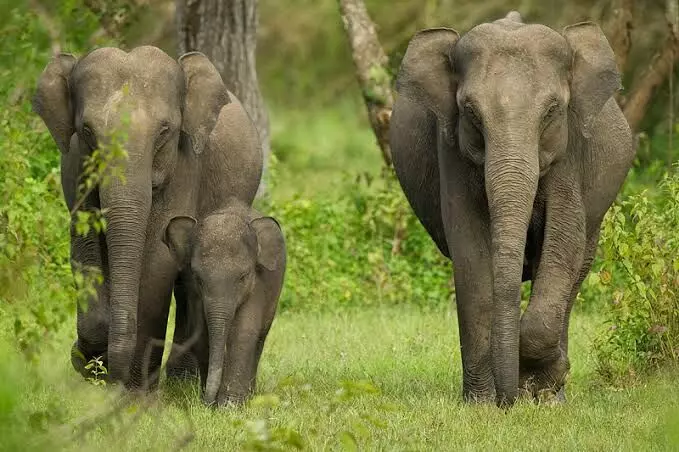Three-day elephant population estimation exercise in Karnataka to begin on May 23
This includes 65 forest ranges and 563 beats, engaging 1,689 personnel over three days
By Newsmeter Network
Bengaluru: Amid cases of human-animal conflict, a synchronised elephant population estimation exercise will be carried out for three days in 10 forest divisions of Karnataka, located on the interstate boundary with Kerala, Tamil Nadu and Andhra Pradesh, officials said on Monday.
The exercise will be conducted in divisions of Kolar, Cauvery Wildlife, MM Hills Wildlife, BRT Tiger Reserve, Bannerghatta National Park, Bandipur Tiger Reserve, Nagarahole Tiger Reserve, Madikeri Territorial, Madikeri Wildlife and Virajpet.
This includes 65 forest ranges and 563 beats, engaging 1,689 personnel over three days starting from May 23, they said.
In a statement, the office of Forest Minister Eshwar Khandre said that in the wake of human-elephant conflict cases and movement of elephants across the landscape of the Nilgiri Biosphere Reserve, an Interstate Coordination Committee (ICC) was setup by the states of Karnataka, Kerala and Tamil Nadu.
An Interstate Coordination Committee (ICC) Charter was signed by the forest ministers of the states of Karnataka, Kerala and senior forest officials of Tamil Nadu in Bandipur National Park on March 10, 2024.
The charter mandates a synchronised population estimation exercise of the wildlife in the interstate region, which would provide valuable insights into population dynamics and potential conflict scenarios and help in management of the conflict in a holistic manner. This is crucial for designing the conflict management strategies, the statement said.
Hence, a synchronised elephant population estimation exercise for the southern states of Karnataka, Kerala, Tamil Nadu and Andhra Pradesh has been scheduled on May 23, 24 and 25.
According to the latest data shared by the state government, 25 elephants have died since January 1 till date in Karnataka, and out of these, two were reported to be unnatural deaths.
In the same period, 22 humans have died in elephant attacks while another four deaths occurred due to attacks by other wild animals, it stated.
According to the officials, as part of the exercise, on day one the officials will carry out a direct count exercise. The data of the beats where elephant presence was detected were collected for the exercise conducted in 2023.
Of these beats, 50 per cent are chosen randomly by the divisions. Of the beats selected, sample blocks were selected from each forest division of size 5 square km, taking into account the diverse vegetation, altitudinal and rainfall patterns.
A team of two-to-three people will systematically survey each of the selected blocks and walk a minimum of 15km to cover a five square km block and record all elephant sightings on the block count data sheet provided. The staff will also record the age and sex of all animals seen, whenever possible.
On day two, 'line transects' exercise would be carried out during which the staff would walk the transect line and record data about elephant dung piles on the either side of the line.
A transect is a linear path through a natural habitat where plants, animals and microorganisms live and is used to make standardised observations and measurements.
The perpendicular distance of the dung pile from the line and the freshness of the dung pile (less than 24 hours, more than 24 hours) are recorded.
These two exercises are used for the abundance estimation of elephants in these habitats. Along with the forest cover, land use type data and the field data obtained, current elephant use/distribution area, mean elephant density and number of elephants is calculated.
On the third day, waterhole direct count exercise with photographic evidence will be done during which waterholes, salt licks and open areas, with maximum use by elephants are identified. A fixed-point observation is undertaken for elephants from 6 am to 6 pm at these selected locations.
The size of the herd, age and gender of the individuals is recorded along with photographs of the individuals or groups. This data is used to assess the age and sex distribution (demography) of the elephant populations.
The data generated shall be compiled and, with the help of scientists from IISc Bangalore, analysed using statistical methods. After the analysis, population estimation shall be obtained for all four states, for the areas falling on the boundary of each of the states, the statement added.